I have been preoccupied with house maintenance for the last few weeks (and playing with my shiny! new! car!). There will be another update on the organ soon, once the toe pistons are returned and plugged in again. And I still have to tell you all about the rocker tabs.
A suspiciously productive weekend
I keep waiting for something to go horribly wrong.
Following on from yesterday’s success, I was able to confirm today that the reed switches are all behaving properly. This means that both stop jambs are now functional. I still have to program the BBS-1K modules that they plug into, but that’s a trivial detail (he said, sealing his fate). Today’s activity centred around unscrewing the manuals. I didn’t think I’d have to do that again, but there you go.
When I first wired up the manuals, I connected the 0V wire of the LED to the common ground of the thumb pistons. Now I come to actually wire them up, I realise that this is incorrect. The LEDs will be driven by another MIDECO module, via a MIBO-LITE board. This requires the 12V connection to be “always on”, and the 0V connection is made or broken by the MIBO-LITE. This necessitated a quick soldering job on the underside of each keyboard, to break the connection to the common ground and attach a long lead for connection to the module. What larks!
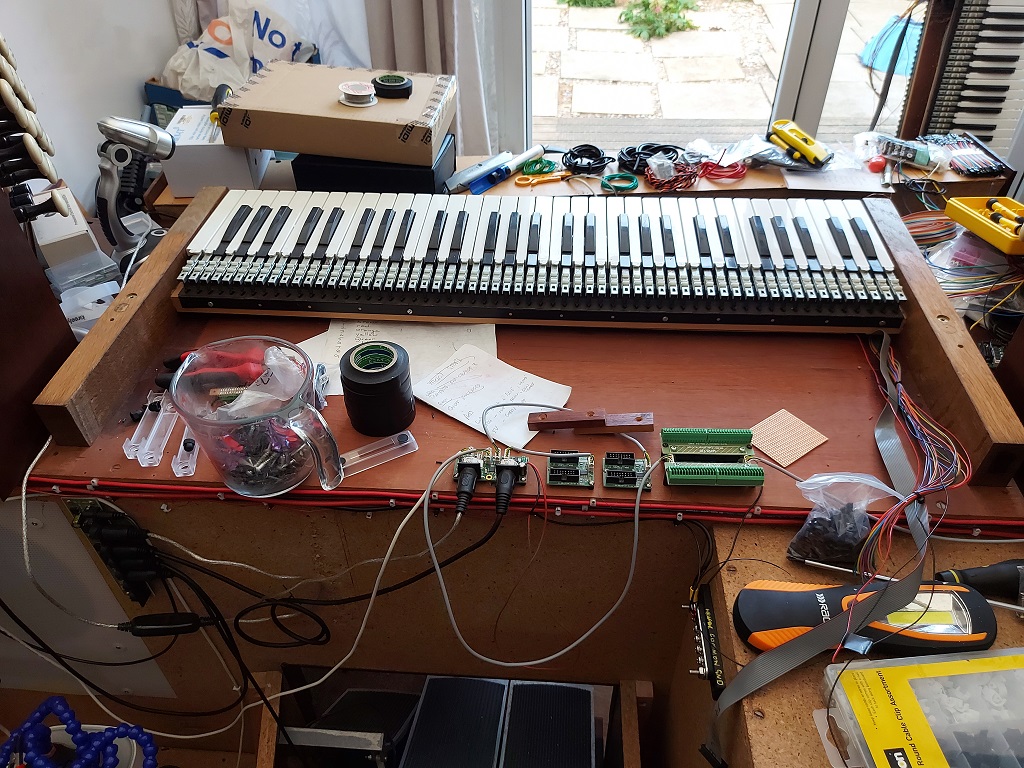
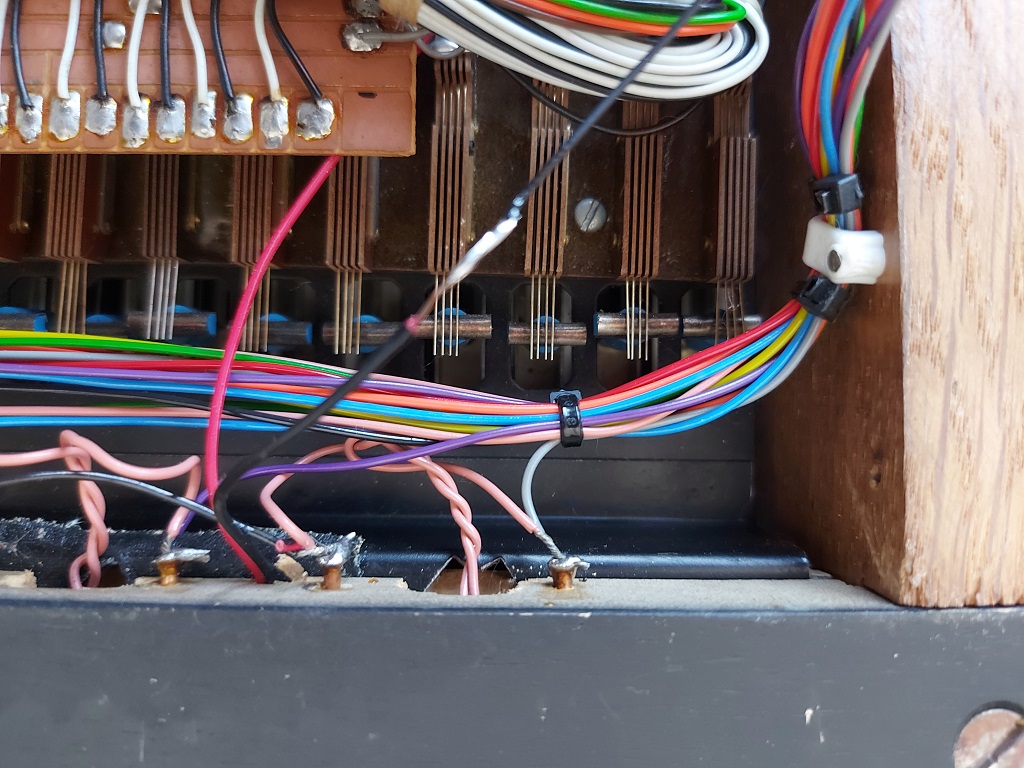
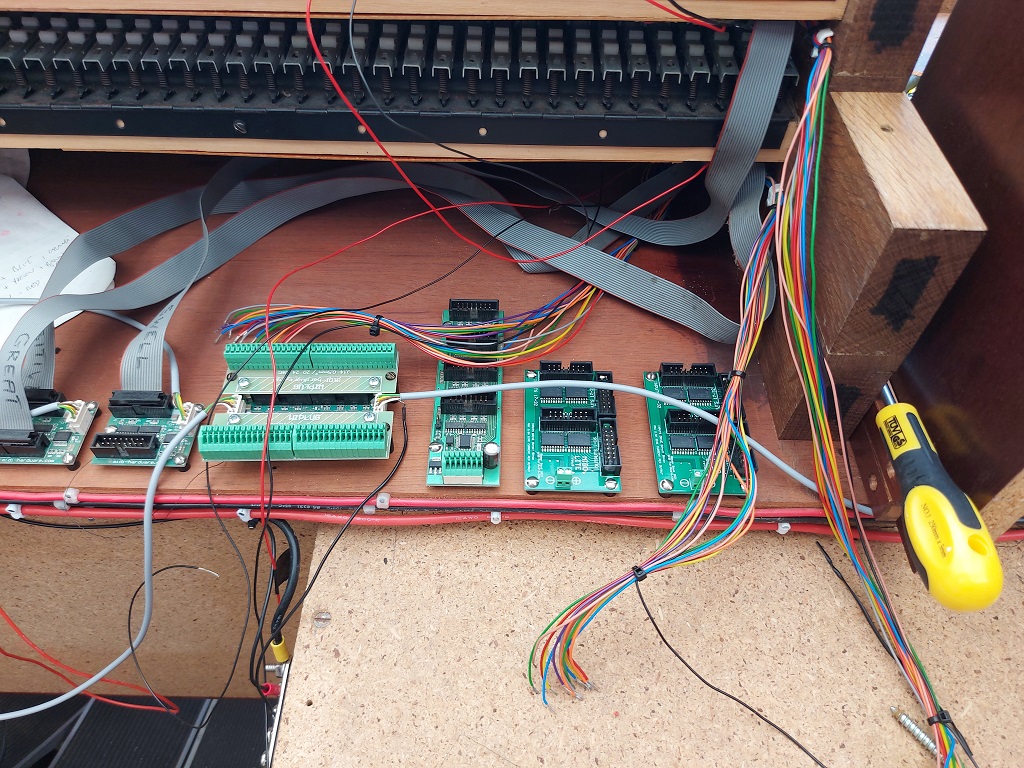
While the keyboards were disconnected, I took the opportunity to screw down the boards which will turn LEDs on and off. Apart from the three on the manuals, there will be another 32 behind the rocker tabs. “Rocker tabs, you say?” (I hear you cry.) More about them at a later date.
David has promised to return the toe pistons Real Soon Now™ and then I should be in a position to make the organ playable again. I miss it.
A small glimmer of hope
Early testing suggests that the reed switches are all behaving. More substantial testing tomorrow.
Left Stop Jamb half-done
Everything on the left-hand stop jamb is wired up, at least in theory. I have connected the solenoids to the MIDECO modules and tested them. After a bit of reprogramming of all four modules (two for each jamb), I now have programmatic control of every drawstop. After exercising all the stops, I have noticed that 18 of them are a bit sticky. This is caused by cracking of the moulded plastic sleeve around the shank of the drawstop. The trick is to unscrew the shank, shave the sleeve slightly to account for the expansion diameter caused by the cracking, and re-insert. I’ll do that at some point over the weekend, when the conservatory isn’t quite so oppressively hot. Still, at least it isn’t as bad as last week.
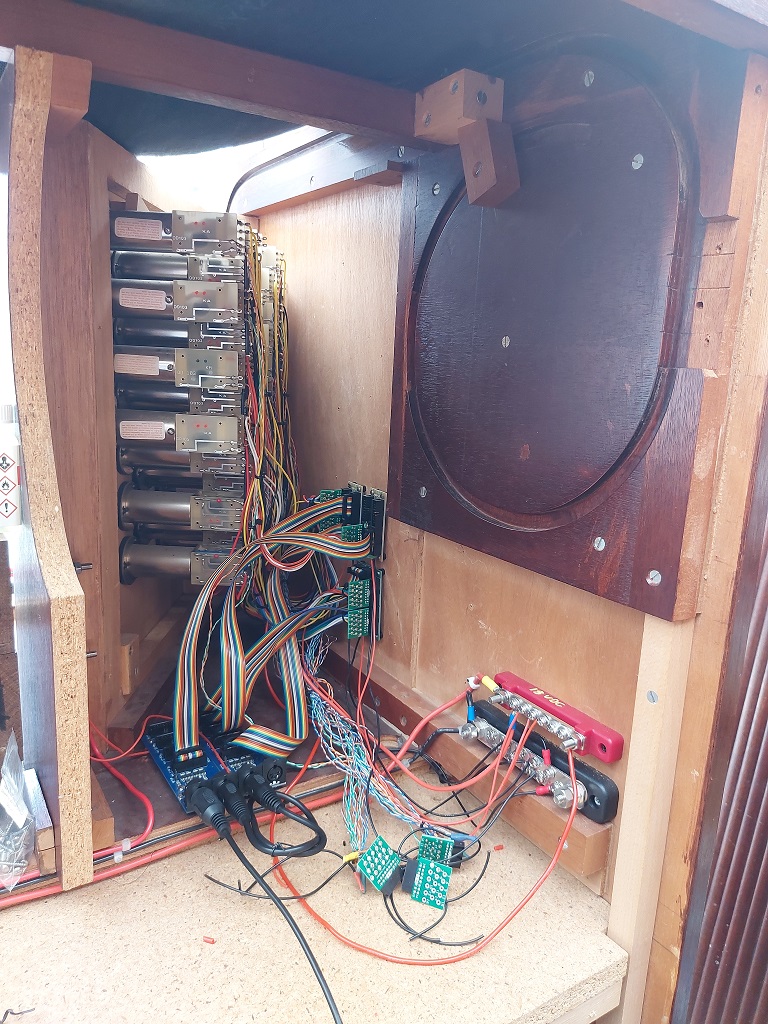
Once I have the drawstops all moving nicely again, I must return to the painful subject of the reed switches. Getting the switches on the right-hand jamb working properly was an exercise in pain. I fervently hope that the lessons learned from that experience will make the left-hand jamb easier. If not, I may have to resort to gin and tantrums. I may resort to gin and tantrums anyway.
Still here…
As predicted, it has been a busy couple of months. Here are some photos of the new drive.
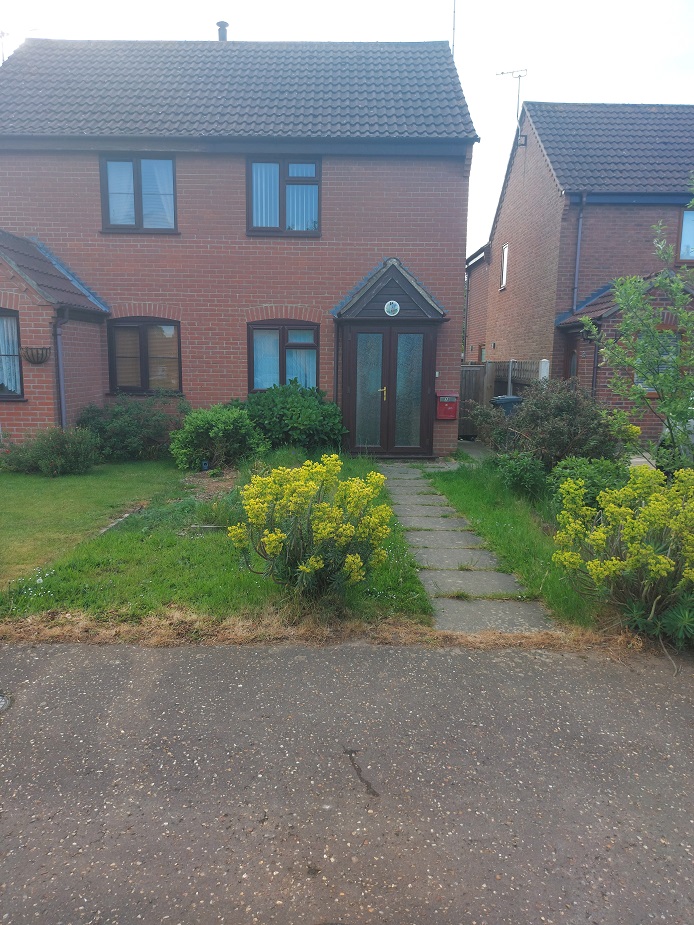
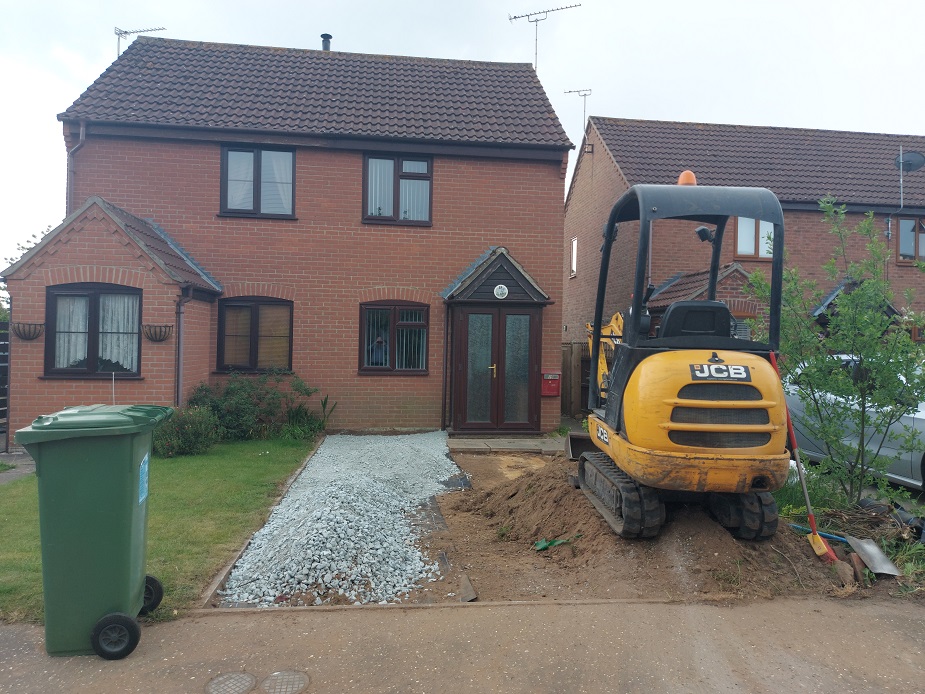

There has also been some progress on the organ, and I will post something interesting in the next week or two.
Assuming I don’t melt.
Here we go again…
I have made a start on the left-hand stop jamb. This one has 34 drawstops, and no added extras. Hopefully it won’t take too long to wire everything up, having learned from my previous mistakes, but there will then be a pause until the last order of components arrives from Midi Hardware. Given the ongoing component shortage, this could take until August. Oh well, there are several other things going on at the moment, and I’m not going to be bored.
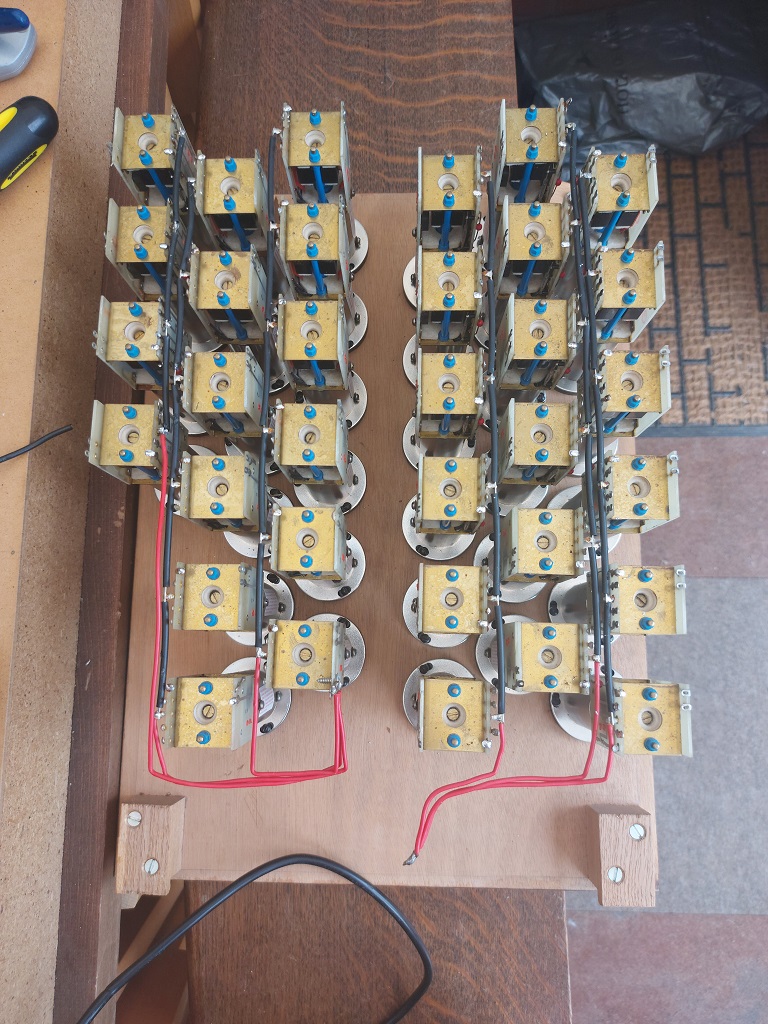
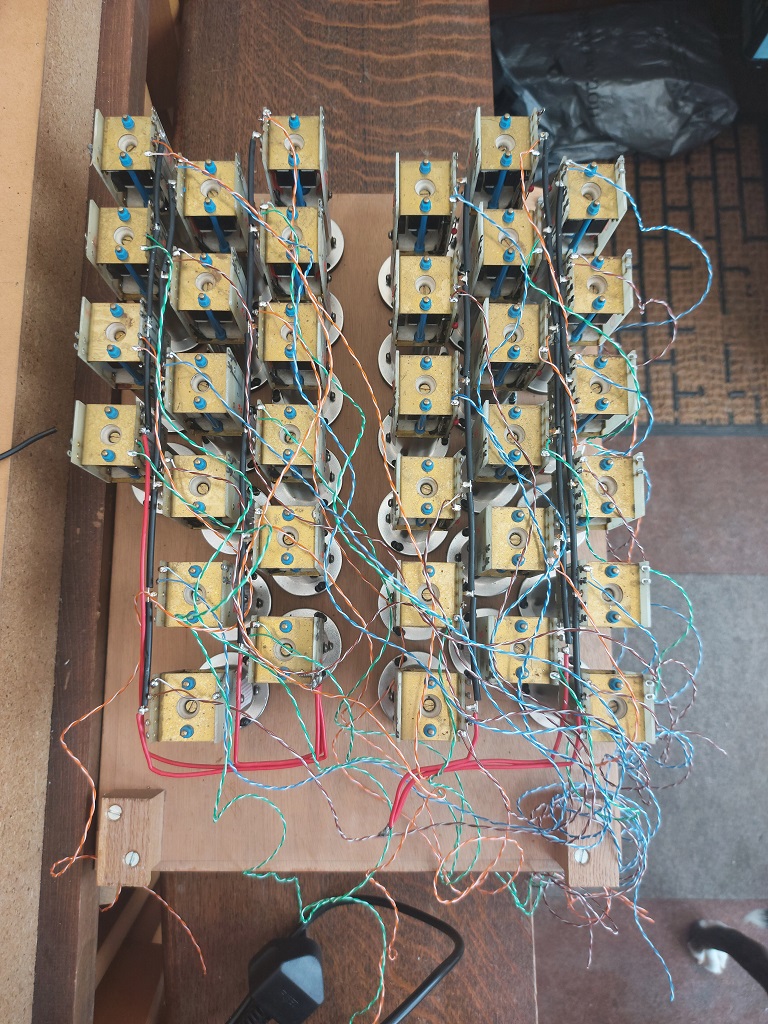
Right stop jamb finished (which had better be the last part of a continuing series)
Finally, after five painful months of soldering, unsoldering, resoldering, replacement pots, replacement wires, replacement reed switches and more, the right-hand jamb is finished. All 35 drawstops send the correct signal when drawn on, and again when put off. Each of the stops can be activated or deactivated by MIDI messages, which are converted into solenoid pulses. There are two 3-way rotary switches, and four pots, all of which send the correct messages when fiddled with. There are no stray messages being sent anywhere. It all works.
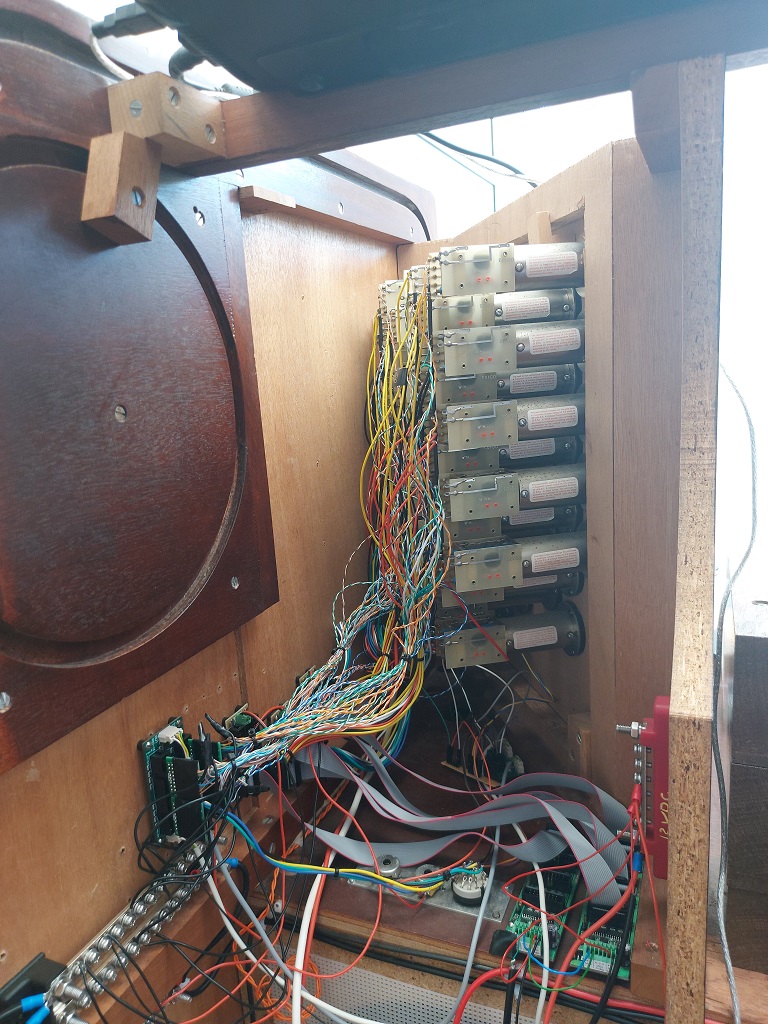
I need to shorten and/or tack up a few wires, but the work is essentially complete.
I have already prepped the left-hand jamb, to which I now need to solder 138 wires, but first I need to extend the 12V, 18V and GND lines across to the other side of the console.
Time to order more wire. By the end of the project, I will have used more wire than ITER.
Right stop jamb finished (part -1 of a continuing series)
I hate pots. I hate RFI. I hate lifting the jamb in and out of the console like a demented hokey-cokey.
Right stop jamb finished (part 2 of a continuing series)
I am pleased to report that the SAMs all work exactly as they are intended to work. Everything is now wired up on the right-hand jamb, and all MIDI messages are generated and received correctly.
There is a little bit of noise from one of the pots, which only appears when both MIDECO boards are wired up. There is no connection between the MIDECO and the POT12 controllers, so RFI must be the culprit again. Moving the POT12 board removes most of the noise, and reducing the bit field of the pot removes the rest. This means that there is one pot with range of 0-31 (compared to 0-63), but that won’t be a problem. David is going to, ahem, ferrite out some ferrite beads to see if they help.
There are two sticky pistons. From the names on the stops (Great Enclosed, and Trompette En Chamade 8), I suspect that they were rarely used in the Lady Chapel of Buckfast Abbey – this may explain it. As per David’s instruction, I’m going to dismantle them both and see what is wrong.
So I get to dismantle the jamb again. Yea, verily, my cup runneth over.
Right stop jamb finished (?)
I shudder to think how many times I have removed and re-inserted the stop jamb into the console, and my mind shies away from the enormity of the number of times I have re-soldered connections. But… it might now be complete (subject to final testing). The (new) pots and rotary switches are all working. The reed switches are all working. The SAMs were working, but who knows if they still are? I will test them this evening.
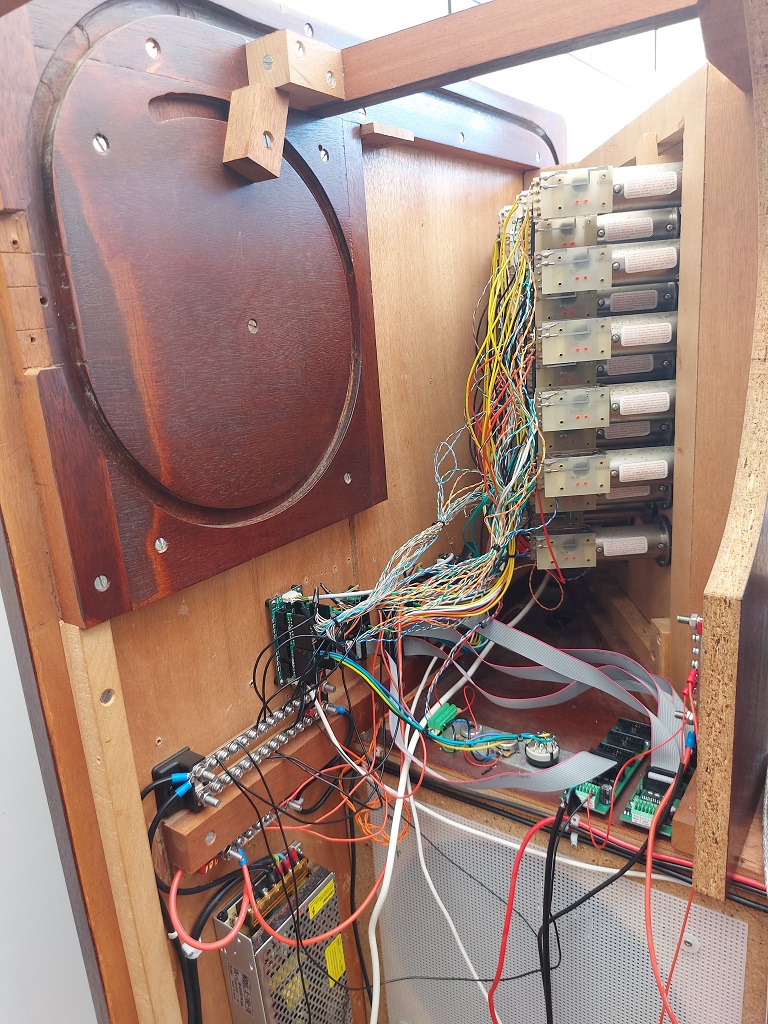
The once-neat power runs are a mess again, due to further modifications. I needed a 12VDC busbar for the various things which need that kind of power. I will need a similar busbar on the other side of the console, when I get to it. The GND needs extending over there as well. That is all a headache for another day. At some point, assuming the SAMs are functional, I will have to order Yet More Wire to start wiring up the left jamb. Hopefully, having made all my mistakes on its sibling, this will go easier. (I’m assuming nothing.)
Still need to reattach the toe pistons when David has finished putting them together, and I also need his help to fix a couple of stiff drawstops.
Onward and sideways, as they say.
